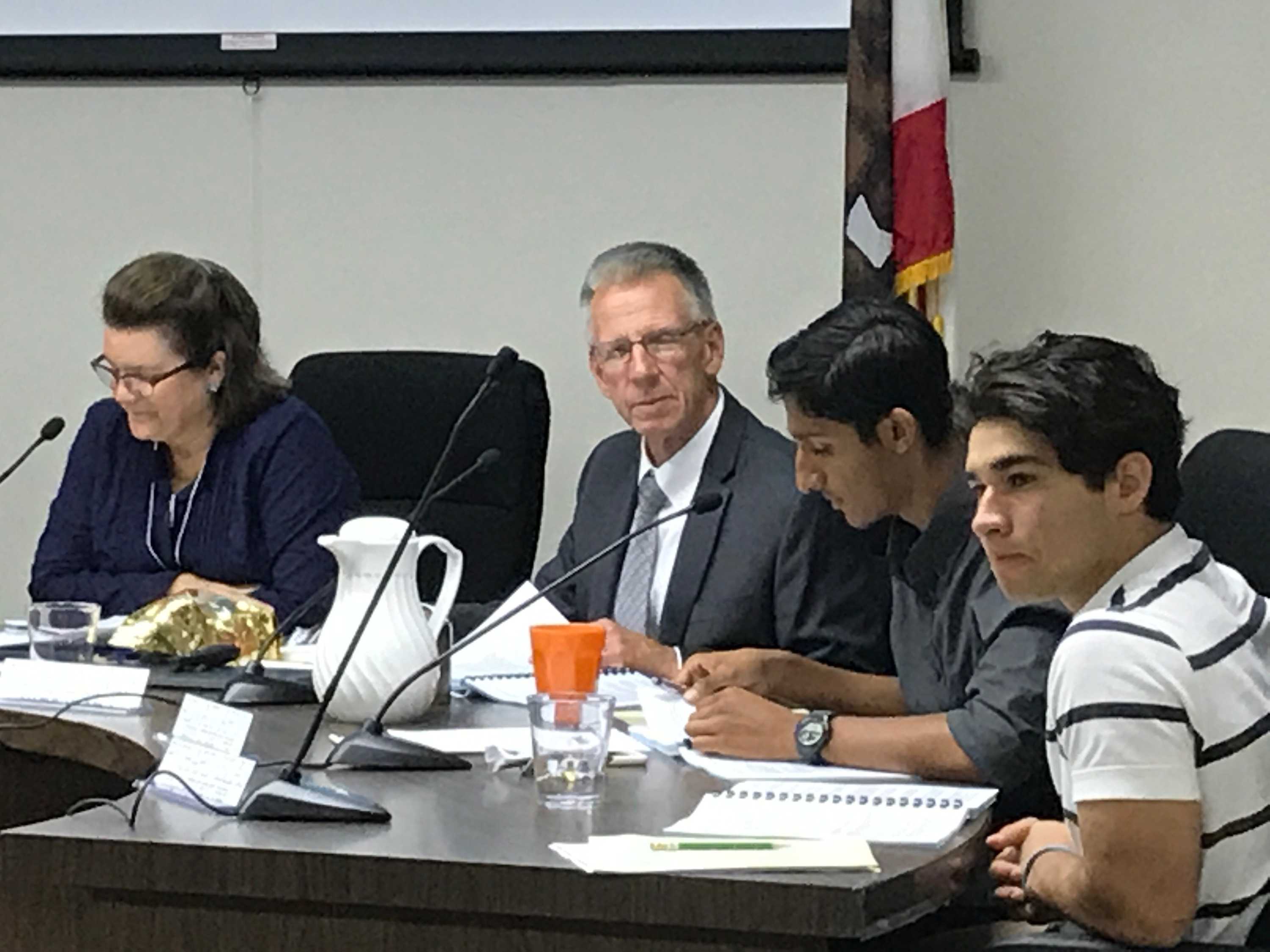
After Tuesday’s discussion of sexual harassment, enrollment trends and budget issues, the Palo Alto Board of Education is charting a path forward on multiple issues central to community concern.
The sexual harassment discussion opened with Supt. Max McGee announcing the reopening of the search for a Title IX compliance coordinator. The board had a final candidate from their most recent search, but McGee said that the board “didn’t think the individual was qualified enough” for the position.
Trustee Ken Dauber — who expressed concern with the “educational setting” language in the district’s sexual harassment policy at the last meeting — said he is still uncomfortable with the language and talked about the irrelevance of two sections involving students and teachers. Section 16b of the draft policy states that district staff and former students are not allowed to have sexual relationships together “in an educational setting.” Section 16c asks whether the employee’s behavior adversely affects the current educational environment. Dauber moved to strike parts b and c from 16.
Eve Fichtner, a partner at the law firm Atkinson, Andelson, Loya, Ruud & Romo, was on call answering questions about the sexual harassment policy and agreed that 16c be removed. By doing so, the district would be “going above and beyond what Title IX says and what the education code says.” Dauber’s motion passed.
In addition to the continuation of the Title IX discussion, the board was briefed on enrollment data for the district. The data, taken on the 11th or 14th day of each school year, shows that the “bubble” of the most densely populated grades in the district is moving from middle school to high school. According to the district’s forecasters, elementary and middle school enrollment is projected to decrease over the next year years, while high school enrollment is projected in increase.
The Chief Academic Officer of Secondary Education, Sharon Ofek, explained that “high schools can accommodate this projected growth” during the high school summary.
According to Ofek’s presentation, Palo Alto schools were able to reduce class sizes this year, with minor improvements in middle and high schools. In middle schools this year, eight out of 540 core class sections have over 30 students, a slight reduction from last year’s 11 sections. In high schools, 2.6 percent of core classes have over 32 students, compared to the 5 percent from last year, Ofek said.
One community member asked why 32 students is a relevant statistic for an acceptable class size. According to Trustee Todd Collins, this number was selected because it seemed achievable in the span of a year. The final goal is to have the average class size reduced to 28.5.
Other difficulties with classes include staffing issues. Many classes, especially in math departments, are taught by busy teachers with large class sizes, with some teachers teaching 6 periods a day, according to Ofek. The schools cannot add classes to reduce sizes either, as it would involve creating different schedules for many students and spending more money, Ofek said. She added that larger class sizes are also the result of limited funding for teachers; with a set budget and needs in other departments, the district cannot afford to pour all of its spendings into the teaching category, but the district is still working at finding a balance, Ofek said.
After that, the board began the discussion about the budget with a multi-year plan and apologies for the unplanned spending of $6 million. According to Palo Alto Online, this error occurred because district leadership failed to notice that they missed the deadline for reopening contract negotiations, leading to a pay raise of three percent for all union members, or $4.4 million. Another $1.4 million worth of losses was the result of the employee bonuses distributed at the end of the year.
According to the board, this loss, along with other factors, almost guarantees that cuts will have to be made in programs that impact students.
The board proposed four different scenarios, two of which include a one percent raise for all employee units for the next five years. The board members also explained even if the chosen scenario did not give raises to the district’s employees, the result would be the same. The budget is limited and cuts will be made.
The next board meeting will be on Sept. 26, during which the board will vote on the budget revisions.
Jevan Yu contributed reporting to this article.


